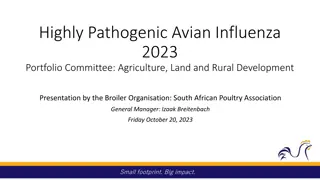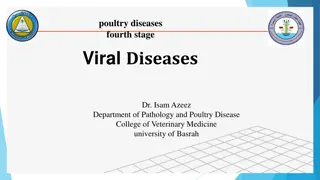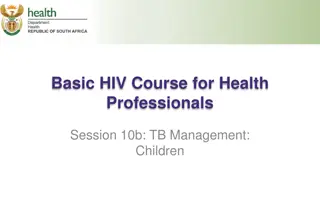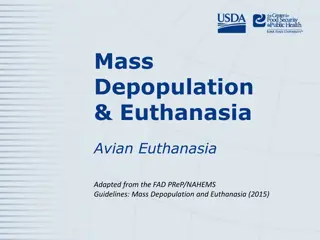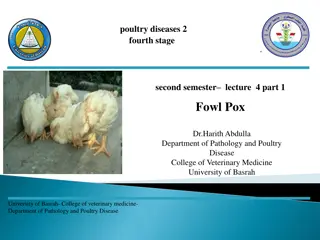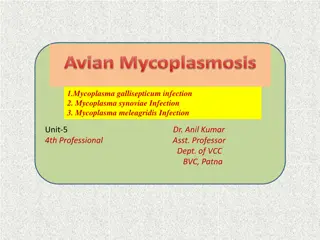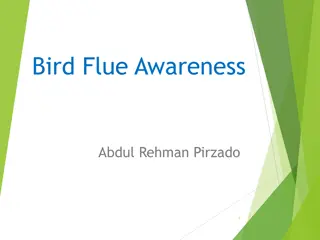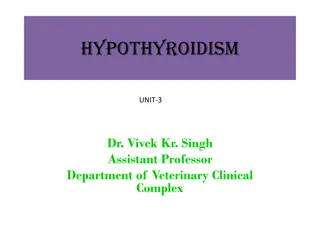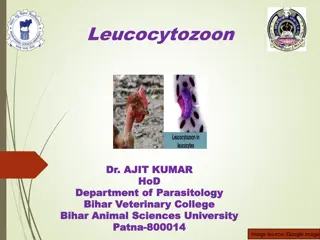Avian Spirochetosis: Clinical Signs, Diagnosis, and Control
Avian spirochetosis is an acute bacterial infection transmitted by ticks to birds, causing varied clinical signs. The disease is caused by Borrelia anserina and can be transmitted through fecal droppings, contaminated feed/water, or cannibalism. Clinical findings include depression, anemia, and inappetence. Diagnosis involves microscopic identification of Borrelia in the blood. Treatment with antibiotics like penicillin and tetracyclines is effective, and control measures include tick vector elimination or vaccination with bacterins.
Download Presentation

Please find below an Image/Link to download the presentation.
The content on the website is provided AS IS for your information and personal use only. It may not be sold, licensed, or shared on other websites without obtaining consent from the author.If you encounter any issues during the download, it is possible that the publisher has removed the file from their server.
You are allowed to download the files provided on this website for personal or commercial use, subject to the condition that they are used lawfully. All files are the property of their respective owners.
The content on the website is provided AS IS for your information and personal use only. It may not be sold, licensed, or shared on other websites without obtaining consent from the author.
E N D
Presentation Transcript
Unit-5 Anil Kumar Asst. Professor Dept. of VCC, BVC, Patna
Avian spirochetosis An acute bacterial infection transmitted by tick to a wide range of birds with highly variable and nonspecific clinical signs. Etiology: Caused by Borrelia anserina, is an actively motile spirochete and consists of 5 8 loosely arranged coils. Transmission: The disease occur in temperate or tropical regions, wherever the biologic vectors are found and transmitted by tick Argas persicus where it maintains the infection throughout their larval, nymphal, and adult stages. Cultivation in vitro is difficult and grow on Barbour-Stoenner- Kelly medium but loses virulence after 12 passages. In embryonated duck or chick embryos or in young ducks or chicks, it can be propagated. Other vectors like lice, mosquitoes, some species of ticks, inanimate objects can transmit the spirochete mechanically.
Ingestion of bile-stained fecal droppings containing the spirochete, contamination of feed or water, and cannibalism during spirochetemia can result in infection. Clinical Findings : Highly variable, depending on the virulence of the spirochete. Listlessness Depression Somnolence, Moderate to marked shivering Increased thirst Ruffled feathers Anemia Pale combs can be noticed and inappetence can lead to reduced weight
Young birds are affected more severely than older ones. During the initial stages of the disease, there a green or yellow diarrhea with increased urates. Lesions: Enlarged spleen, with petechial or ecchymotic hemorrhages, appearing dark or mottled A green, catarrhal enteritis Diagnosis: Microscopic Identification Demonstration of Borrelia in the blood, either as actively motile during darkfield microscopy Giemsa-stained blood smears, or PCR Treatment and Control : Antibiotics like penicillin tetracyclines, and tylosin are effective Control requires elimination of the tick vector or immunization with bacterins prepared from local strains of B. anserina. derivatives, streptomycins,




